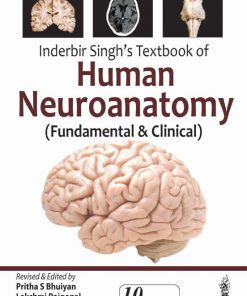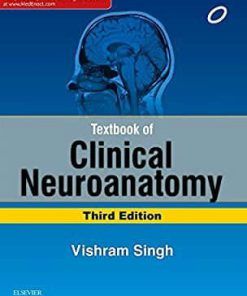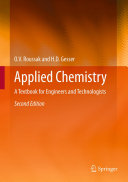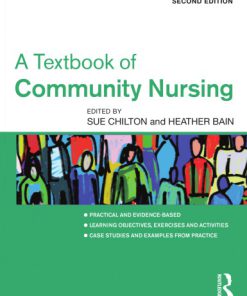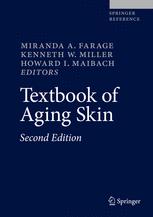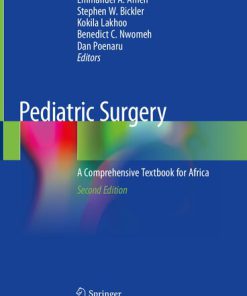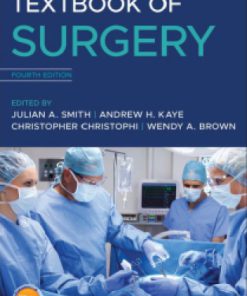A Textbook of Neuroanatomy 2nd Edition by Maria Patestas 1118677223 9781118677223
$50.00 Original price was: $50.00.$25.00Current price is: $25.00.
A Textbook of Neuroanatomy 2nd Edition by Maria A. Patestas – Ebook PDF Instant Download/DeliveryISBN: 1118677223, 9781118677223
Full download A Textbook of Neuroanatomy 2nd Edition after payment.
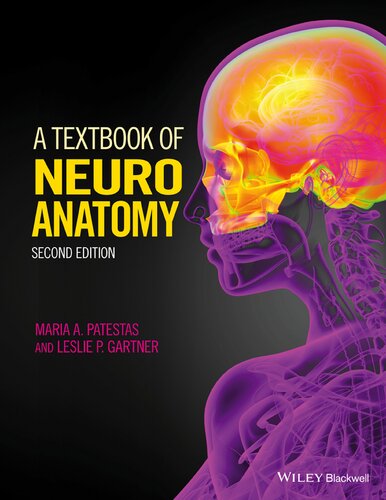
Product details:
ISBN-10 : 1118677223
ISBN-13 : 9781118677223
Author: Maria A. Patestas
Newly revised and updated, A Textbook of Neuroanatomy, Second Edition is a concise text designed to help students easily master the anatomy and basic physiology of the nervous system. Accessible and clear, the book highlights interrelationships between systems, structures, and the rest of the body as the chapters move through the various regions of the brain.
Building on the solid foundation of the first edition, A Textbook of Neuroanatomy now includes two new chapters on the brainstem and reflexes, as well as dozens of new micrographs illustrating key structures. Throughout the book the clinical relevance of the material is emphasized through clinical cases, questions, and follow-up discussions in each chapter, motivating students to learn the information. A companion website is also available, featuring study aids and artwork from the book as PowerPoint slides.
A Textbook of Neuroanatomy 2nd Table of contents:
Part I: General Principles of the Nervous System
Chapter 1: Introduction to the Nervous System
Cells of the Central Nervous System
Central Nervous System
Peripheral Nervous System
Questions to Ponder
Chapter 2: Development of the Nervous System
Early Development
Neurulation
Early Development of the Spinal Cord and Brain
Development of the Spinal Cord
Development of the Brain
Synonyms and Eponyms of the Nervous System
Questions to Ponder
Chapter 3: Histophysiology of the Nervous System
Neurons
Neuroglia
Generation and Conduction of Nerve Impulses
Synonyms and Eponyms of Nervous System Histopathology
Questions to Ponder
Chapter 4: Neurotransmitter Substances
Classification of Neurotransmitter Substances
Questions to Ponder
Chapter 5: Spinal Cord
Morphology of the Spinal Cord
Internal Morphology of the Spinal Cord
Vascular Supply of the Spinal Cord
Synonyms and Eponyms of the Spinal Cord
Questions to Ponder
Chapter 6: Gross Anatomy of the Brain
Cerebrum
Diencephalon
Cerebellum
Brainstem
Synonyms and Eponyms of the Brain
Questions to Ponder
Chapter 7: Brainstem
Internal Organization of the Brainstem
Medulla
Pons
Midbrain
Synonyms and Eponyms of the Brainstem
Questions to Ponder
Chapter 8: Meninges and Cerebrospinal Fluid
Cranial Meninges
Spinal Meninges
Venous Sinuses of the Cranial Dura Mater
Cerebrospinal Fluid
Ventricles of the Brain
Synonyms and Eponyms of the Nervous System
Questions to Ponder
Chapter 9: Vascular Supply of the Central Nervous System
Vascular Supply of the Spinal Cord
Arterial Supply of the Brain
Venous Drainage of the Brain
Synonyms and Eponyms of the Vascular Supply of the Central Nervous System
Questions to Ponder
Chapter 10: Autonomic Nervous System
Sympathetic Nervous System
Parasympathetic Nervous System
Enteric Nervous System
Neurotransmitters and Receptors of the Autonomic Nervous System
Pelvic Autonomic Functions
Synonyms and Eponyms of the Autonomic Nervous System
Questions to Ponder
Chapter 11: Spinal Reflexes
Components of Reflexes
Lower Motoneurons
Skeletal Muscle Innervation
Skeletal Muscle Receptors
Muscle Stretch Reflex
Reciprocal Inhibition
Autogenic Inhibition (Inverse Myotatic Reflex)
Flexor Reflex (Withdrawal Reflex, Nociceptive Reflex)
Crossed Extension Reflex
Maintenance of Muscle Tone Via the Gamma Loop
Alpha-Gamma Coactivation
Synonyms and Eponyms of the Spinal Reflexes
Questions to Ponder
Part II: Integrative Components of the Nervous System
Chapter 12: Ascending Sensory Pathways
Sensory Receptors
Anterolateral System
Tactile Sensation and Proprioception
Sensory Pathways to the Cerebellum
Modulation of Nociception
Neuroplasticity
Synonyms and Eponyms of the Ascending Sensory Pathways
Questions to Ponder
Chapter 13: Motor Cortex and Descending Motor Pathways
Cortical Areas Controlling Motor Activity
Descending Motor Pathways
Synonyms and Eponyms of the Motor Cortex and Descending Motor Pathways
Questions to Ponder
Chapter 14: Basal Nuclei
Components of the Basal Nuclei
Nuclei Associated with the Basal Nuclei
Input, Intrinsic, and Output Nuclei of the Basal Nuclei
Connections of the Basal Nuclei
Circuits Connecting the Basal Nuclei, Thalamus, and Cerebral Cortex
Other Circuits of the Basal Nuclei
Neurotransmitters of the Basal Nuclei
“Direct” and “indirect” loops (pathways) of the Basal Nuclei
Circuits that Modulate Activity of the Basal Nuclei
Synonyms and Eponyms of the Basal Nuclei
Questions to Ponder
Chapter 15: Cerebellum
Morphology of the Cerebellum
Cerebellar Peduncles
Deep Cerebellar Nuclei
Afferents (Input) to The Cerebellum
Efferents (Output) from the Cerebellum
Functional Organization of the Cerebellum: Intrinsic Circuitry
Synonyms and Eponyms of the Cerebellum
Questions to Ponder
Chapter 16: Reticular Formation
Morphology of the Reticular Formation
Zones of the Reticular Formation
Nuclei Associated With the Reticular Formation
Input to and Output From the Reticular Formation
Functions of the Reticular Formation
Synonyms and Eponyms of the Reticular Formation
Questions to Ponder
Chapter 17: Cranial Nerves
Olfactory Nerve (CN I)
Optic Nerve (CN II)
Oculomotor Nerve (CN III)
Trochlear Nerve (CN IV)
Trigeminal Nerve (CN V)
Abducent Nerve (CN VI)
Facial Nerve (CN VII)
Vestibulocochlear Nerve (CN VIII)
Glossopharyngeal Nerve (CN IX)
Vagus Nerve (CN X)
Spinal Accessory Nerve (CN XI)
Hypoglossal Nerve (CN XII)
Synonyms and Eponyms of the Cranial Nerves
Questions to Ponder
Chapter 18: Visual System
Eye
Central Visual Pathways
Visual Reflexes
Synonyms and Eponyms of the Visual System
Questions to Ponder
Chapter 19: Auditory System
Ear
Auditory Transmission
Central Auditory Pathways
Synonyms And Eponyms of The Auditory System
Questions to Ponder
Chapter 20: Vestibular System
Vestibular Apparatus
Vestibular Nerve (CN VIII)
Central Pathways of the Vestibular System
Control of Ocular Movements
Vestibular Nystagmus
Caloric Nystagmus
Synonyms and Eponyms of the Vestibular System
Questions to Ponder
Chapter 21: Olfactory System
Olfactory Receptor Cells
Olfactory Transduction
Olfactory Nerve (CN I)
Central Connections of the Olfactory System
Synonyms and Eponyms of the Olfactory System
Questions to Ponder
Chapter 22: Limbic System
Limbic Lobe
Brainstem Centers Associated with Limbic System Function
Pathways of the Limbic System
Limbic Association Cortex
Limbic System Input to the Endocrine, Autonomic, and Somatic Motor Systems
Synonyms and Eponyms of the Limbic System
Questions to Ponder
Chapter 23: Hypothalamus
Borders
Hypothalamic Zones and Component Nuclei
Hypothalamic Regions (Areas) and Component Nuclei
Connections of the Hypothalamus
Pathways of the Hypothalamus
Functions of the Hypothalamus
Hypothalamohypophyseal Connections
Synonyms and Eponyms of the Hypothalamus
Questions to Ponder
Chapter 24: Thalamus
Borders
Anatomy
Internal and External Medullary Laminae
Thalamic Nuclei
Synonyms and Eponyms of the Thalamus
Questions to Ponder
Chapter 25 : Cerebral Cortex
Cells of the Cerebral Cortex
Types of Cortex
Cell Layers of the Neocortex
Vertical Columnar Organization of the Cerebral Cortex
Afferents (Input) to the Cerebral Cortex
Efferents (Output) From the Cerebral Cortex
Internal Capsule and Corona Radiata
Lobes of the Cerebral Cortex
Functional Organization of the Cerebral Cortex
Cerebral Dominance
Synonyms and Eponyms of the Cerebral Cortex
Questions to Ponder
Questions to Ponder: Answers to Odd Questions
People also search for A Textbook of Neuroanatomy 2nd:
borrow a textbook of neuroanatomy
a textbook of neuroanatomy pdf
a textbook of neuroanatomy 2nd edition pdf
a textbook of neuroanatomy 2nd edition
a textbook of neuroanatomy patestas
Tags: A Textbook, Neuroanatomy, Maria Patestas, the anatomy, the nervous system
You may also like…
Politics & Philosophy - Sociology
Medicine
A textbook of community nursing 2nd Edition by Heather Bain, Sue Chilton 1138068241 9781138068247
Medicine - Dermatology
Medicine - Surgery





